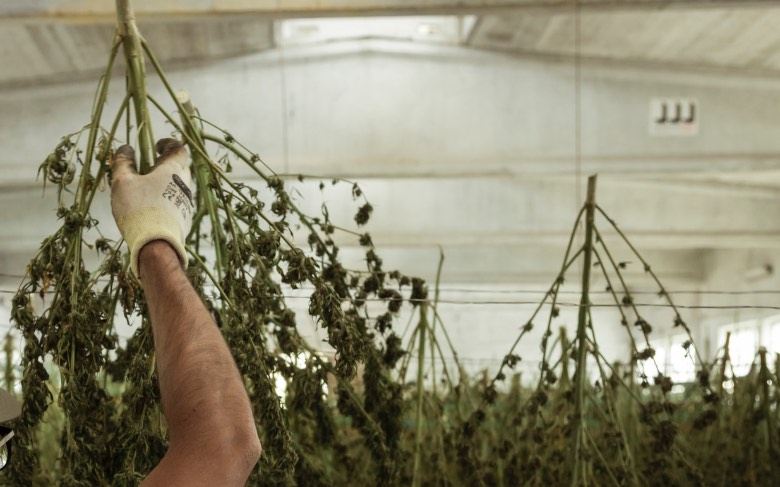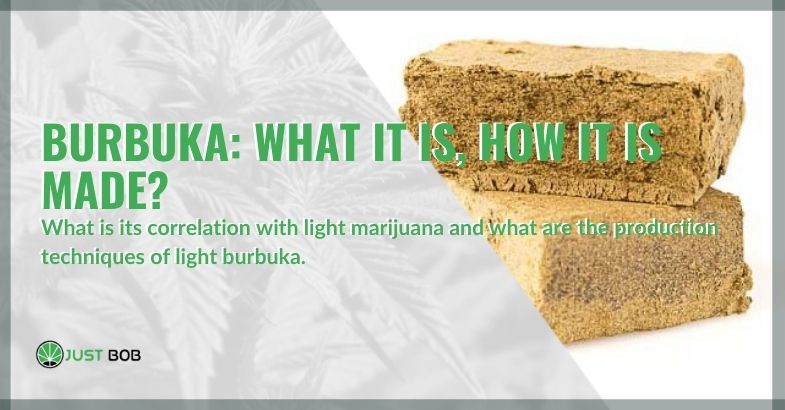What is burbuka, how is it made and what are the production techniques of light burbuka
Are you wondering what Burbuka is and why it is one of the most talked-about products in the cannabis and CBD cannabis landscape but can’t find enough information about it?
Indeed, data on this particular hashish and its production are scarce, especially when it comes to its light version.
We at Justbob have therefore decided to talk to you, in detail, about hashish Burbuka, its origins and how it arrived in the world of Sativa hemp products, approved by law 242/2016.
Let’s get started right away!
Read also: The most powerful herb in the world? We tell you!
Burbuka: what is it, and why is it so popular?
The Burbuka is a type of hashish produced in Morocco and known worldwide for its high quality (and high THC content).
Although cannabis in Morocco has been illegal since 1956, it is a partially tolerated substance in the country, so much that its cultivation has never stopped… Nor hashish production!
Currently, Morocco is one of the world’s largest producers of cannabis and Burbuka hashish, so much so that even the world of CBD weed has adopted its method of production of the latter.
If you are not familiar with the methods of making hashish, keep reading because you will be fascinated!
Traditional Burbuka production in Morocco
In Morocco, the production of Burbuka starts first from the harvesting and drying of marijuana.

The CBD buds destined to give life to hash remain to dry in the dark for months until the producers determine that the time has come to extract the resin in the form of pollen, rich in THC and other cannabinoids.
At this point, they prepare metal bowls covered with a filter (for example, a pantyhose) and an additional piece of fabric, on which they spread the cannabis buds, then covered with a transparent plastic sheet.
The workers then place the bowls between their feet and begin to beat the flowers with sticks so that the pollen (called kief) falls into the containers passing through the filters.
That’s it! After hitting the grass appropriately, the workers discover the bowls: the product accumulated on the bottom is the pollen, or the dried resin, an extremely powerful and sought-after product.
1 kg of weed turns into about 10 g of kief, which is then partially consumed by women (in Morocco, women smoke pollen and not hashish) and mostly made into Burbuka.
How? Precisely, the producers pack the kief in plastic packs in the shape of a rectangular surface, press it, heat it and then let it mature. The hashish blocks are marked with a symbol that indicates the manufacturer and then distributed worldwide by criminal associations.
The final product is a dark-coloured (black or greenish) block, malleable and extremely powerful. It’s a real cannabinoid concentrate, THC in particular, so it delivers a far more potent high than weed.
However, the procedure (and distribution) of Burbuka light is very different from the one just described.
Legal Burbuka? Different from illegal and beneficial hashish
Producing legal Burbuka starts with excellent (at least in our case) crops of CBD cannabis with a high CBD content.
There are two ways to make Burbuka hash, also called black hash:
- The purification of flowers with an oily and resinous component
- Extraction from the plant in the flowering phase
The collected powder is then processed and packaged into blocks, then left to mature for a specific time.
Legal Burbuka hashish is one of the best on the market for several reasons: the most prominent ones are its high malleability (given its high CBD oil content), its lengthy processing manually and its numerous beneficial effects.
It is a product very rich in cannabidiol (about 14%), an active ingredient of cannabis that is not psychotropic but with pain-relieving, anti-inflammatory, relaxing effects and many more.
Read also: The 4 best coffee shops in Amsterdam
There is another reason why CBD Burbuka is extremely valuable: the absence of chemical additives (with which contraband hashish is often cut) and, therefore, absolute safety for the buyer.
What about THC? You may be wondering.
In this case, tetrahydrocannabinol is annihilated by CBD: THC is present in CBD flowers (and therefore in CBD hash) in concentrations of less than 0.2%.
In conclusion
Now you know, in great detail, what Burbuka is and what are the differences between illegal Moroccan hashish and legal hashish in the UK.
What are you waiting for? Buy it now at our CBD Flower and CBD hash online shop!
Click here to add to your collection of products made from CBD cannabis! We are waiting for you on Just bob.



